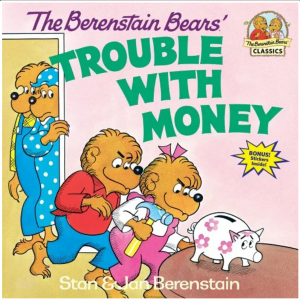
How Parents Can Help Their Kids Learn Financial Health
We get asked by parents how they can help their children learn about financial health, often with the goal that the children would not “repeat the same mistakes that I made.” Many parents assume they need to wait until a child is school age or even a teenager before they can start learning about these topics, and they’re surprised when we tell them how early you can start: about three years old. Supporting your child to learn at these early ages will help them develop skills that are fundamental to financial health in adulthood.
Every child develops at their own pace, both physically and cognitively, but by three years old, most children are developing their skills with language, symbols and imagination. These are all tools for building the foundation of lifelong financial health. This is an ideal age to start having conversations about money and all of the other resources that support our financial health. You can learn more about what primary concepts children “need to know to lead financially smart lives” at various ages at the Consumer Financial Protection Bureau’s Money as You Grow site.
We know that children learn from social interactions with other people they trust. A child’s social interactions allow them to observe how to do things and practice how to do things. Children learn about finances and personal economics the same way they learn about everything else: through observation, imitation, play, social interactions, conversations, practice, and reflection on all of these activities. Any direct instruction we do about “money matters” will be far more effective if we integrate these approaches.
One of the best ways a parent can help their child learn about financial matters is by reading together with them. Just about any book has “teachable moments” that involve finances. At the library, you can check books out and learn tips for how to read with your children, too.
For ages 3 through 7, any of the Berenstain Bears books will be ripe for this approach, but if you want to try one that addresses the subject directly, try Trouble with Money.

Brother and Sister Bear start out as spendthrifts but quickly learn how to earn and save. They get so good at earning, Papa Bear gets concerned that “They’ve gone from caring too little about money to caring too much!” In the end, Brother and Sister Bear show their generosity and the Bear family has fun playing an arcade video game together. This book illustrates various approaches to interacting with money, but it also shows how your other assets (including your environment, family and neighbors) can support you as you grow your financial health.
Bunny Money by Rosemary Wells shows how Ruby and Max make spending decisions (some good, some maybe not so good) on an outing to find a birthday gift for their grandmother. Ruby, as the older sister, is quite patient with her younger brother Max’s impulsive choices and it turns out that their grandmother is pleased with the gifts they wind up buying, even the glow-in-the-dark vampire teeth that Max chooses for her. You can ask your child what they think about each spending choice the bunnies make.
One of my favorite books for helping young children learn about financial health is A Chair for My Mother by Vera B. Williams. After their house burns down, the neighborhood comes together to help Rosa, her mother and grandmother get set back up with everything they need for their new home except one item: a big, comfortable chair. The three of them work together to save a jar full of coins so they can buy the chair that will bring them all comfort. This beautifully written and illustrated book shows a loving family recovering from a traumatic experience through their own efforts as well as the support of extended family and neighbors (without talking directly about the trauma).

If you want to try reading books like these with your child (or if you’re helping someone who has a young child), here are a few tips to enhance the experience:
- Remember, the main goal is to have a fun experience together. Learning will occur without you having to work at it.
- Choose age-appropriate books: Select books that are appropriate for your child’s age and comprehension level (ask a librarian if you have questions).
- Look for engaging stories with relatable characters and simple explanations of financial concepts. The books don’t have to be directly about money; any story about people making choices that affect their personal economic situation will work fine, which means many books, even those with animal characters.
- Make it interactive: While reading, engage your child by asking questions. For example, you could ask, “Why do you think the character wants to save money?” or “Which one would you choose?” or “What do you think will happen next?”
- Relate the book to real life: Connect the concepts in the books to real-life situations. For example, when you go shopping, ask them what the book character might choose to buy (or not buy). Involve your child in decisions about what to buy and discuss the choices you make.
- Be patient: Understand that these concepts might take time to sink in. Use repetition to reinforce the ideas by reading the book together again or bringing up similarities between one book and another you read.
We would enjoy hearing about your favorite books to read with children and your tips for having a fun learning experience together.

